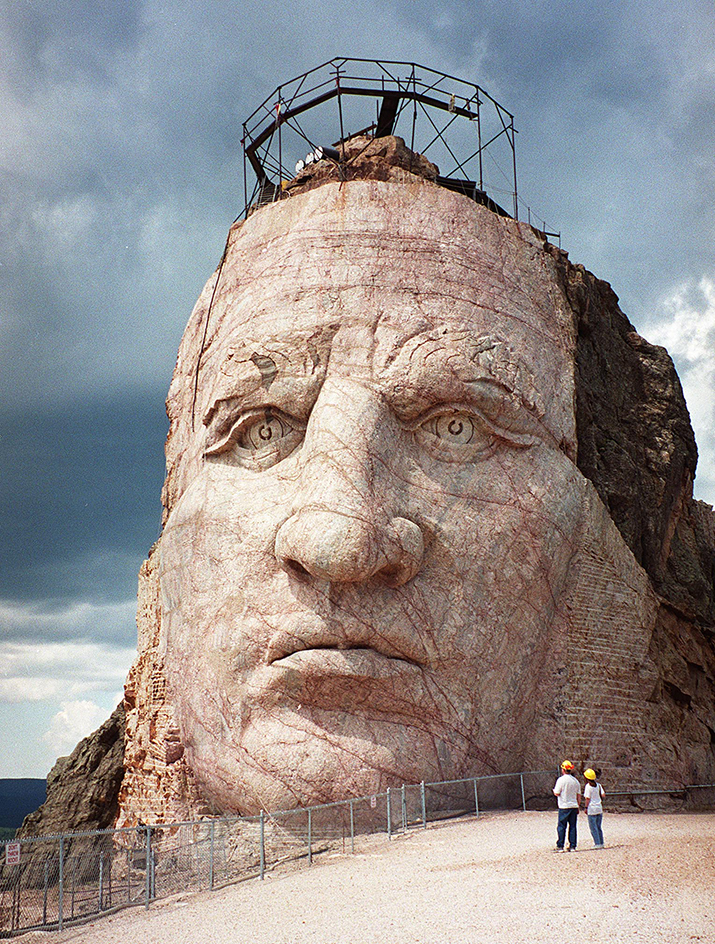Crazy Horse (1844?-1877) was a leader of the Oglala, a band of Lakota also known as the Teton Sioux . As a warrior and leader, Crazy Horse fought with great courage and tactical skill and was believed to possess unusual spiritual powers. He received his name after showing remarkable bravery as a boy. His Lakota name was Tasunke Witko.

In 1866, a series of conflicts began between the Lakota and the United States government, and Crazy Horse led warriors in a number of victories against U.S. troops. In 1868, the U.S. government and Lakota leaders signed the Fort Laramie Treaty, which created the Great Sioux Reservation in the Dakota Territory. The reservation covered all the land in present-day South Dakota west of the Missouri River. In 1874, however, after gold was found in the area’s Black Hills , President Ulysses S. Grant failed to stop squatters (illegal settlers) from entering the reservation. Crazy Horse, Sitting Bull, and other Lakota leaders were outraged. They left the reservation and refused to return.
In June 1876, Crazy Horse led the Lakota and their Cheyenne allies to victory against General George Crook in the Battle of the Rosebud. About a week later, they defeated Lieutenant Colonel George A. Custer at the Battle of the Little Bighorn (see Custer, George Armstrong ). Following Custer’s death, a reinforced U.S. Army forced the Lakota to return to their reservation. In 1877, Crazy Horse voluntarily surrendered to American troops. He was killed on Sept. 5, 1877, at Fort Robinson, Nebraska, after refusing to enter a jail cell. Many people believe he was assassinated.
Lakota claims to the Black Hills continued into the 2000’s. The Supreme Court of the United States and other courts have found the U.S. government guilty of violating the Fort Laramie Treaty. Construction on a gigantic sculpture of Crazy Horse, carved out of a mountain in the Black Hills, began in 1948.
See also Little Bighorn, Battle of the .
